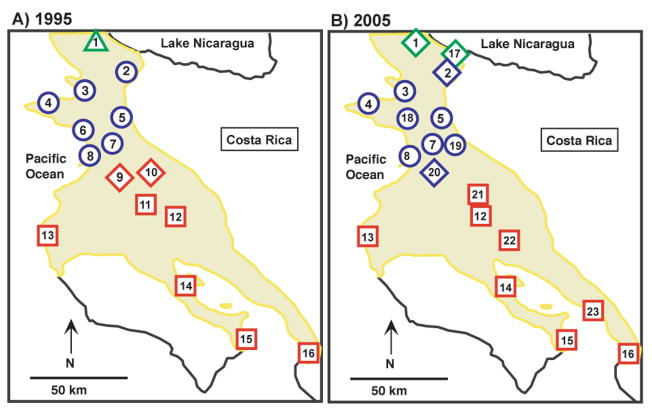Figure 1.
Maps of northwestern Costa Rica showing the distribution of roost sites and vocal dialects surveyed in a) 1994 and b) 2005. Green triangles indicate Nicaraguan dialect roosts, blue circles indicate North dialect, red squares indicate South dialect, and the diamonds indicate bilingual roosts at which both neighboring dialects were observed, with the shading of the diamond indicating the predominant dialect recorded. The yellow shading indicates the range of the yellow-naped amazon in Costa Rica. Sixteen roosts were included in the 1994 call analysis; twelve of these roosts were also sampled in 2005: 1-Peñas Blancas, 2-Hacienda Inocentes, 3-Playa Junquillal, 4-Murcielago, 5-Pelon Altura, 6-Playa Naranjo, 7-Horizontes, 8-Playa Cabuyal, 9-Finca Gisa, 10-Hacienda San Jeronimo, 11-Finca Zapolita, 12-Pelon Bajura, 13-Playa Grande, 14-Puerto San Pablo, 15-Finca Curu, 16-Tarcoles. Seven additional roosts were sampled in 2005 only: 17-Parcelas Santa Elena, 18- Parque Santa Rosa, 19-Finca Ahogados, 20- Las Trancas, 21- Finca Palenque, 22- Taboga/Finca El Cortijo, 23-Tivives.

